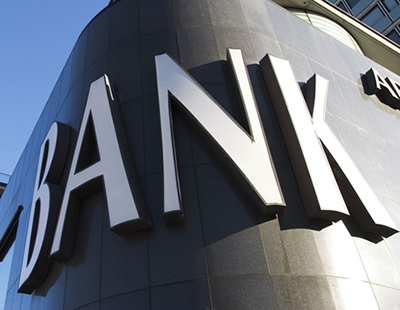
The evolving dynamics of a Central Bank Digital Currency (CBDC) has a subject for global discussion in recent times. The issue can be contributed to the possible effects of private-sector digital currency issuances on financial market stability and monetary policy.
Meanwhile, the International Monetary Fund (IMF) defines a Central Bank Digital Currency (CBDC) as “a public digital form of money issued by a central bank, denominated in the national currency, and typically convertible to other forms of central bank money.”
The World Bank on the other hand defines CBDC as it as “a central bank liability that is digitally created and recorded on centralized or decentralized ledgers, denominated in an existing unit of account, and convertible in physical cash, commercial bank money and other forms of money on demand by the holder at authorized entities.”
In 2023, central banks were heavily involved in an emerging trend aimed at enhancing cross-border payments. They were trying to develop and issue their own version of digital currency similar to crypto, called CBDC or central bank digital currency.
Central Bank Digital Currency (CBDC) design is driven by characteristics like anonymity, interest-bearing, availability, transfer mechanism and restrictions on holding. Central Bank Digital Currency (CBDC) can take different forms, such as digital equivalents of existing notes and coins or a version deposited in a central bank or banking system.
CBDC vs. Cryptocurrency
In contrast, electronic money is the electronic store of monetary value while digital currencies exist only in digital form without a physical counterpart. E-money is the digital equivalent of cash stored electronically on a device, regulated by a financial authority, whereas virtual currency is an unregulated digital currency without legal tender status.
Like cryptocurrency, a Central Bank Digital Currency (CBDC) is a virtual currency that relies on blockchain technology to function. A Central Bank Digital Currency (CBDC), at first glance, looks especially similar to stablecoins such as Tether (USDT) – the cryptocurrencies that are pegged to real-world assets like the U.S. dollar. The key difference, however, is that CBDC are issued and regulated by a central bank. Cryptocurrencies and stablecoins come from private individuals or companies.
CBDC Use Cases & Challenges
According to Statista, the value of transactions processed via central bank digital currency is forecast to grow by 260,000 percent between 2023 and 2030. This is according to a market estimate based on various conditions and sources available in early 2023.
The key drivers for CBDC development varied between developed and emerging countries. Central banks from developed countries hoped to preserve their monetary sovereignty or to improve payment efficiency.
Central Bank Digital Currency (CBDC) can mimic physical cash properties, acting as a substitute and preventing private sector dominance in money creation. In developing economies, cash remains widely used and CBDC introduction might significantly change cash usage.
Other explorative advantages of CBDC include supporting a country’s efforts towards a cashless society, preserving the monetary authority’s role as money issuer, promoting competition and innovation in the National Payment System (NPS).
Central Bank Digital Currency (CBDC) can also reinforce the crucial role of central bank money in the digital world and provides a safe alternative to private sector instruments. It is also worthy to note that a Central Bank Digital Currency (CBDC) can facilitate government payments and transfers especially during emergencies to support rapid and targeted relief.
Additionally, a Central Bank Digital Currency (CBDC) can improve payment system performance, promote fast, secure, efficient payments and supports financial inclusion. However, financial inclusion with Central Bank Digital Currency (CBDC) implementations is difficult to prove due to their diverse features and functions based on policy choices and the market environment.
First, central banks should consider how the design of a CBDC can derive value from these attributes, making it more accessible to all, before deciding whether to issue CBDCs to promote financial inclusion. Besides, CBDCs will require burdensome identification processes and compliance with AML/CFT regulations.
CBDC on Monetary Policy
A central bank implements monetary policy by controlling the money supply, adjusting interest rates, and ensuring price stability. A Central Bank Digital Currency (CBDC) is expected to have a limited impact on monetary policy implementation, but its design features could affect the effectiveness of monetary policy. If widely accessible and interest-bearing, Central Bank Digital Currency (CBDC) could increase the elasticity of money demand and strengthen the transmission mechanism.
Risk of Bank Run
A primary concern for some schools of thought is that Central Bank Digital Currencies (CBDCs) can potentially trigger a systemic bank run on commercial banks due to large-scale withdrawals of bank deposits, prompting savers to place their funds into rewards-based CBDC holdings.
Introducing CBDC deposits can decrease private credit supply by commercial banks, raising nominal interest rates and lowering reserve-to-deposit ratios, which could lead to bank panic. The introduction of a CBDC could also fundamentally alter the roles of the private sector and central bank, replacing commercial bank money with safe central bank money. However, some argue that CBDC might increase the speed and ease of withdrawals at regular bank runs in a crisis but may not inherently increase insolvency fears unless it competes too aggressively with commercial banks for deposits.
If poorly implemented, CBDC can lead to a Diamond-Dybvig (DD) model bank-run by weakening banks’ liquidity positions. A Diamond-Dybvig (DD) model bank run occurs when depositors believe others will withdraw, they rush to do the same, causing a self-fulfilling crisis, even if the bank is solvent. This type of bank-run comes at the cost of the central bank being the sole provider of deposits, which could deviate from the socially optimal contract.
A central bank’s socially optimal contract refers to the design of policies, frameworks, and incentives that align with the central bank’s objectives of social welfare maximization. Studies have examined three cases using digital CBDC money theory: zero-remunerated CBDC, intermediate CBDC, and complete conversion of bank deposits into CBDC.
The occurrence of the DD model bank-run is complex, and there is proof that two financial instruments will coexist but not entirely replace each other. People may prefer bank deposits for services and relationships with banks while turning to CBDC for risk-free holdings and transactions.
The extent to which CBDCs compensate holders with interest rates will depend on whether they are sufficiently high to compete with banks’ savings accounts. As CBDCs are considered a central bank liability, this approach could make central banks a single point of failure. Some probable solutions to bank- runs include requiring higher capital and ensuring emergency lending facilities to the banking system.
Higher capital requirements force banks to maintain a buffer of equity relative to their assets, ensuring they can absorb losses during crises. Alternatively, banks can increase more stable funds like equity funding by retaining earnings or issuing longer-term bonds. If deposits migrate from commercial banks to CBDC, the central bank must intervene by replenishing reserves to maintain liquidity. A central bank may also impose restrictions on the holding and withdrawal of CBDC by an end-user.
Conclusion
CBDCs can promote financial inclusion, improve payment system performance, and support country efforts to move toward a cashless society. However, CBDCs also raise concerns about bank runs, monetary policy implementation, and the need for careful consideration of design features, anonymity, and privacy aspects. Overall, CBDCs have the potential to transform the financial system, but their development and implementation require careful planning and consideration of potential risks and benefits.
References:
Sultana, A (2025), International Journal of Finance & Banking Studies https://www.ssbfnet.com/ojs/index.php/ijfbs
BERNARD BEMPONG
Bernard is a Chartered Accountant with over 14 years of professional and industry experience in Financial Services Sector and Management Consultancy. He is the Managing Partner of J.S Morlu (Ghana) an international consulting firm providing Accounting, Tax, Auditing, IT Solutions and Business Advisory Services to both private businesses and government.
Our Office is located at Lagos Avenue, East Legon, Accra.
Contact: 233 302 528 977
233 244 566 092
Website: www.jsmorlu.com.gh
The post Exploring the impact of Central Bank digital currencies appeared first on The Business & Financial Times.
Read Full Story














Facebook
Twitter
Pinterest
Instagram
Google+
YouTube
LinkedIn
RSS